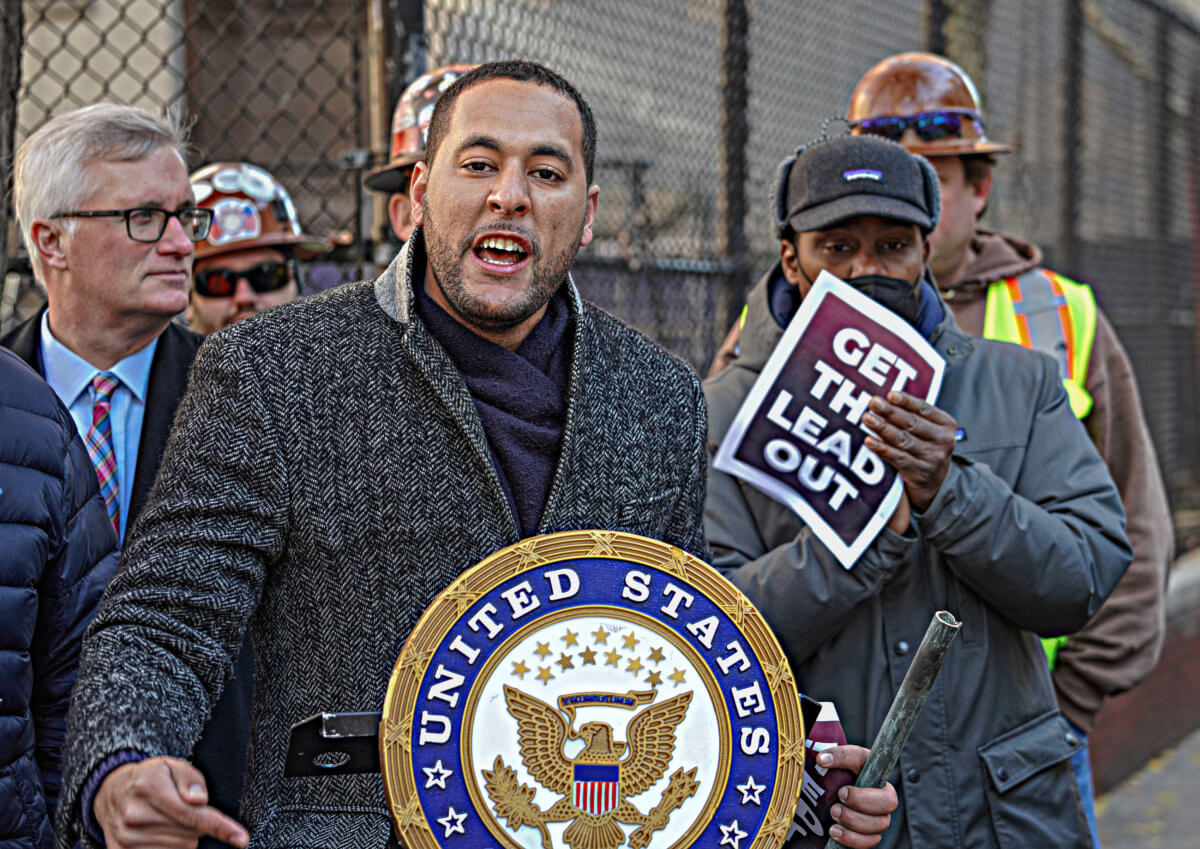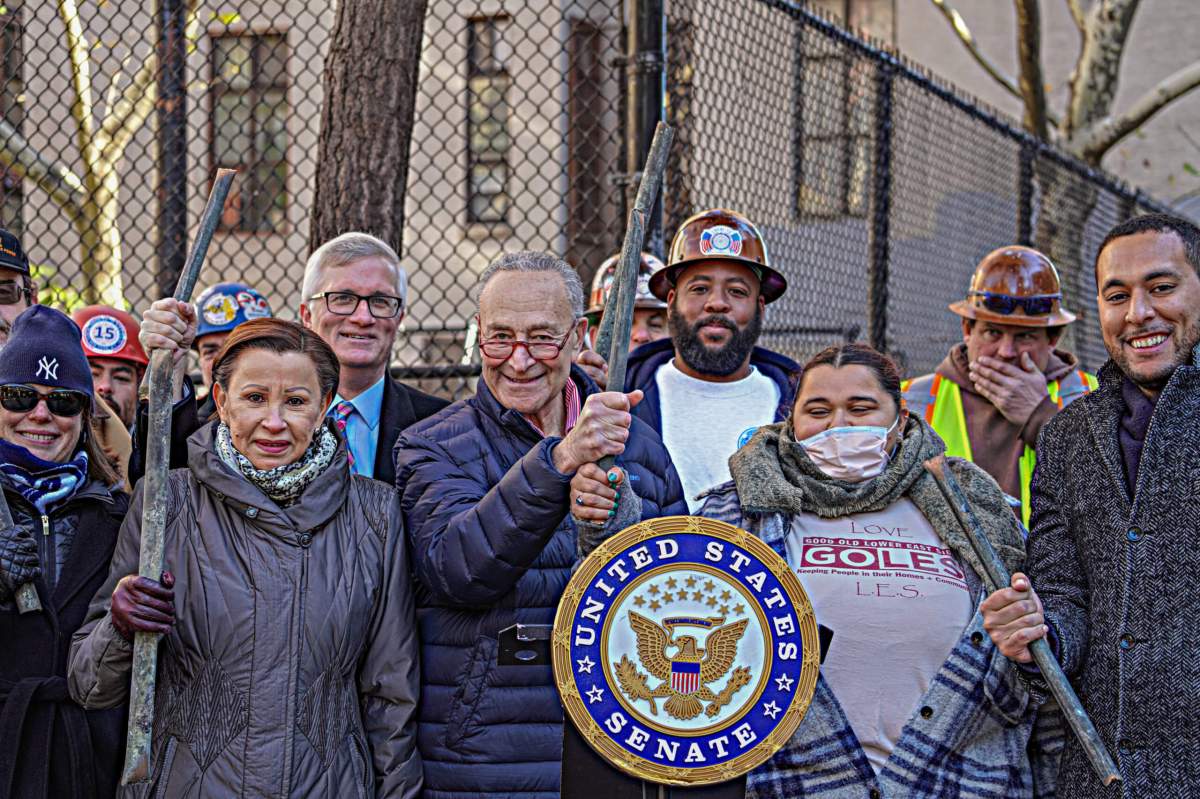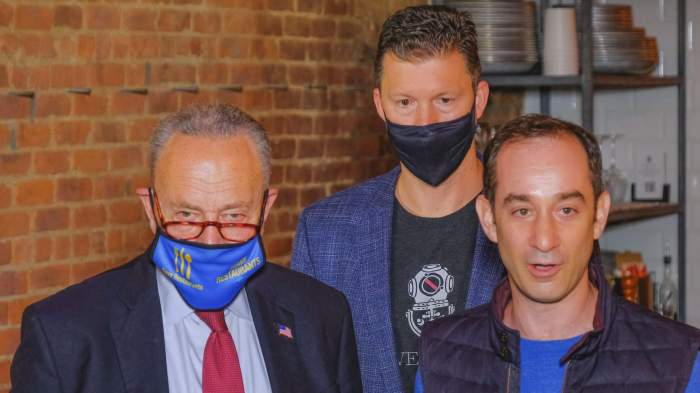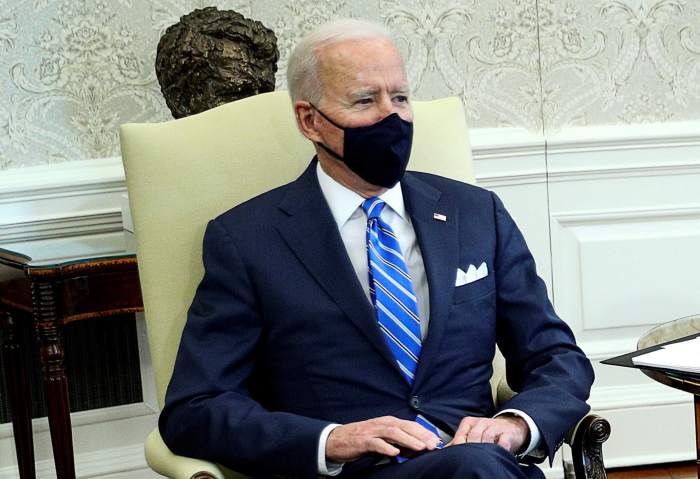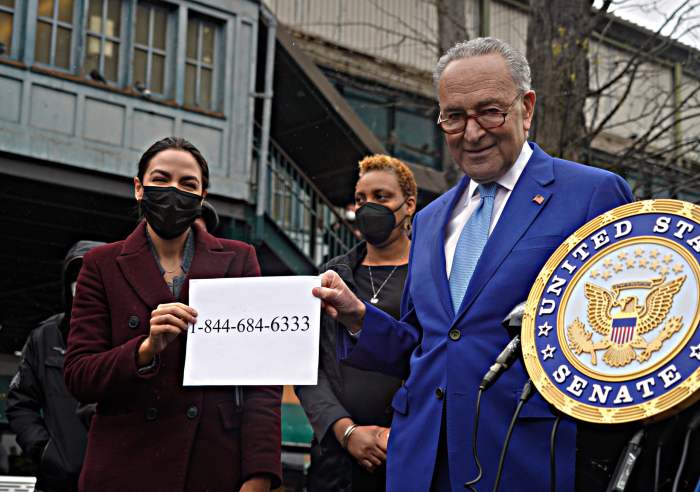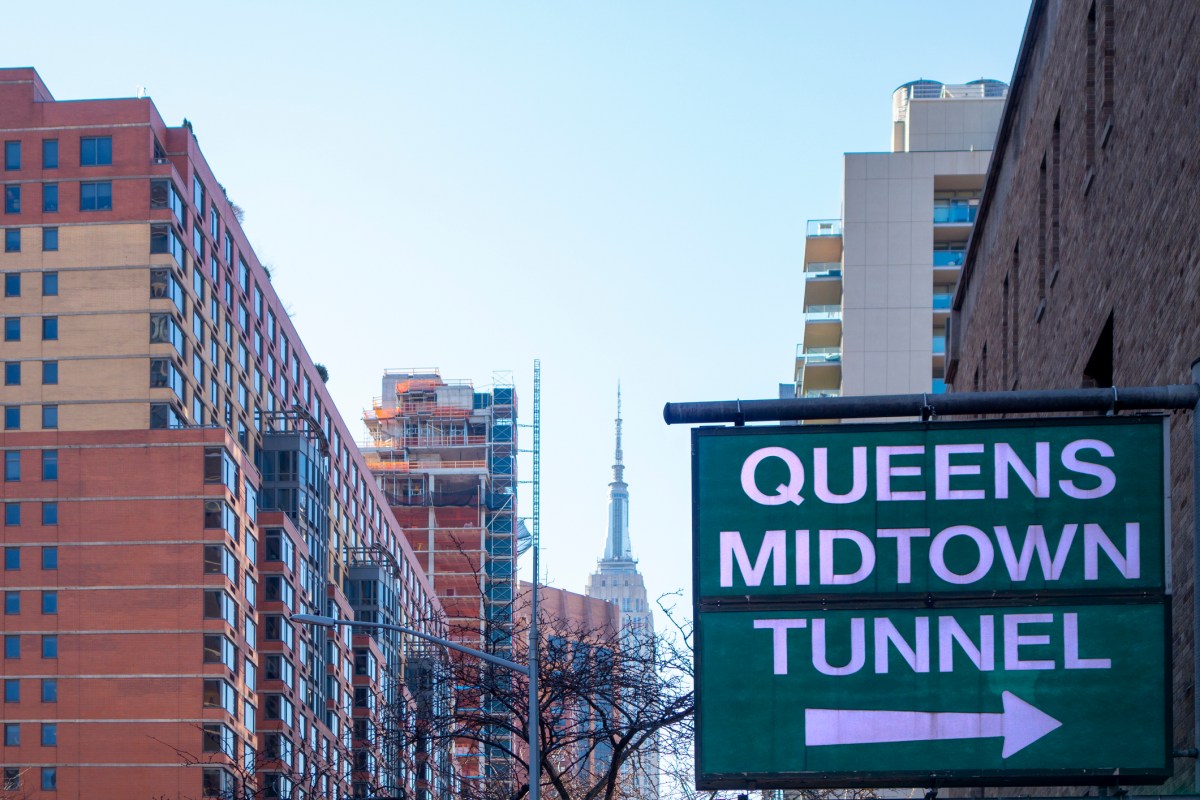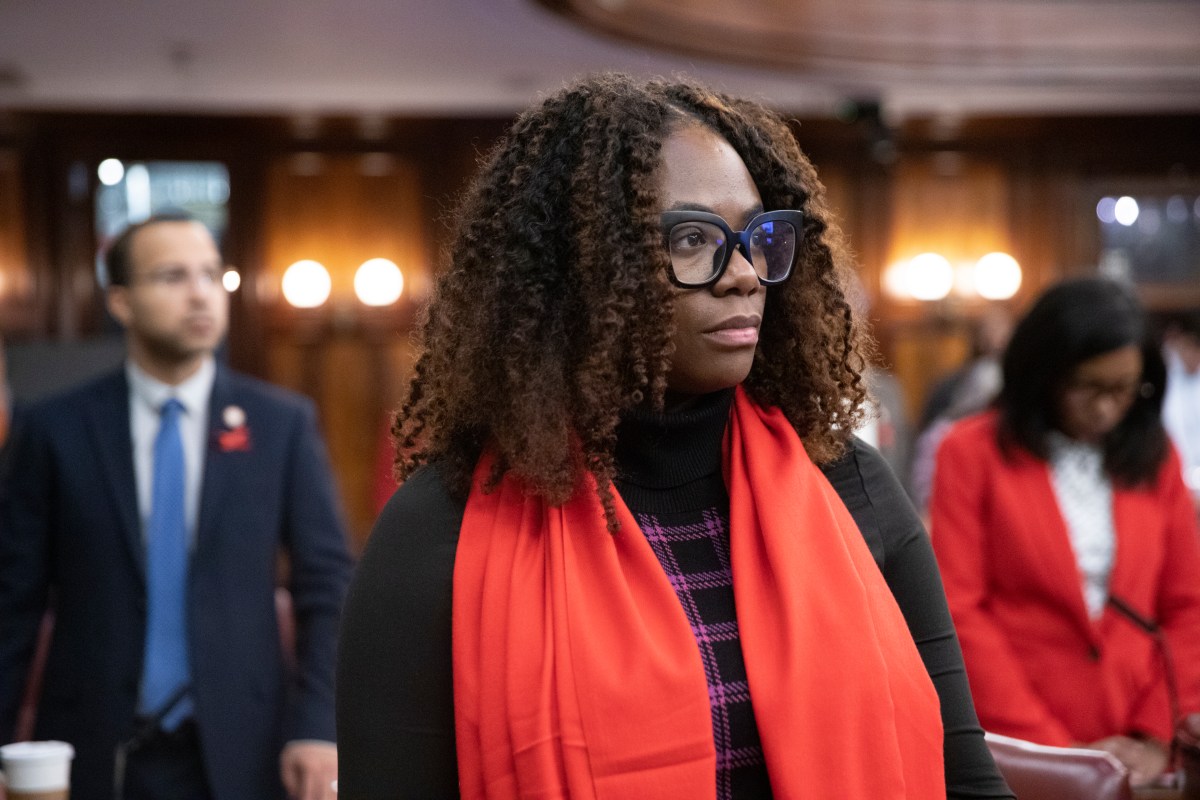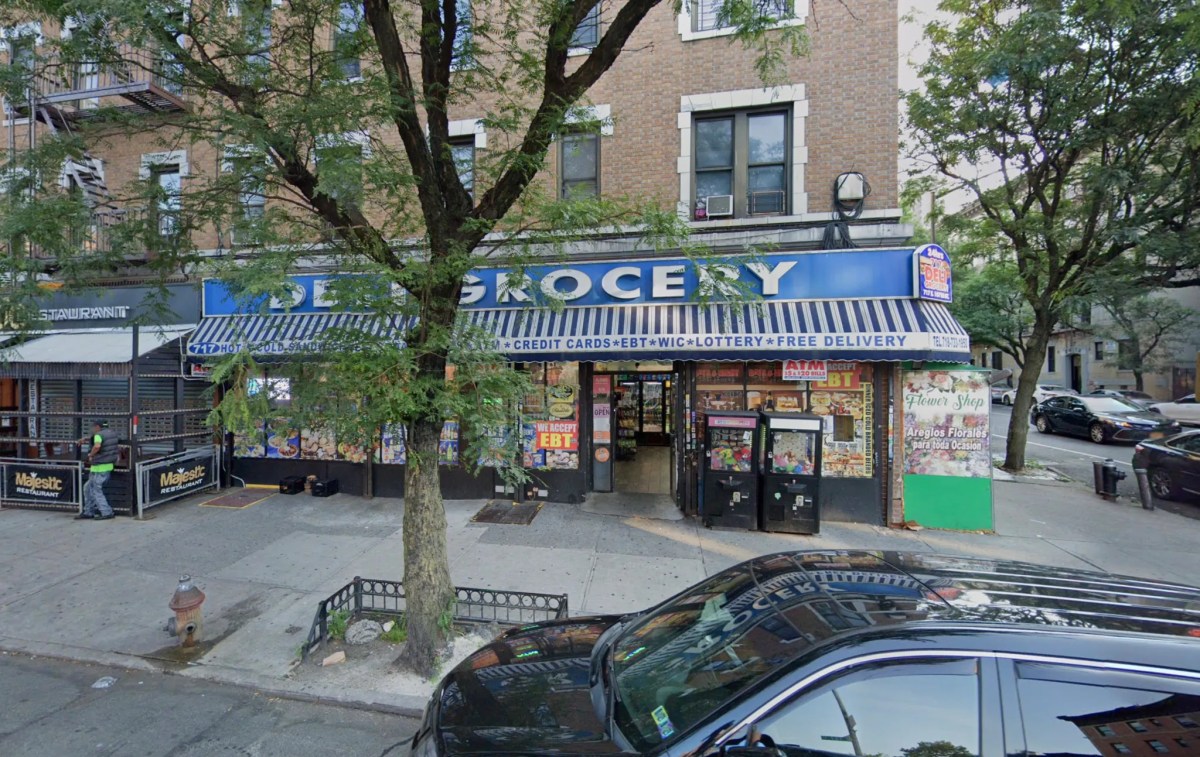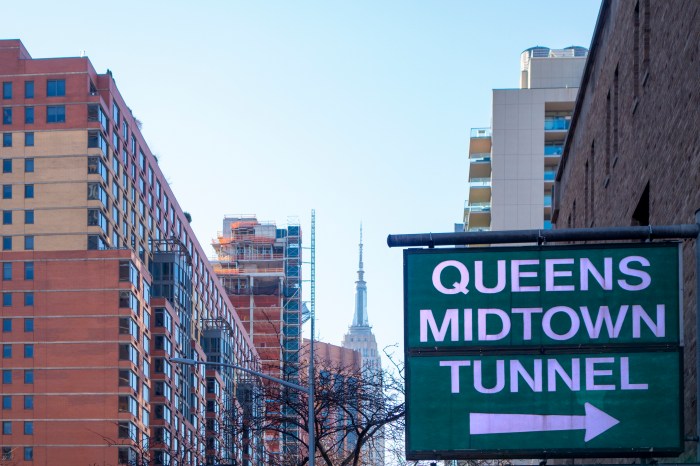Outside of a Lower East Side playground, Senate Majority Leader Chuck Schumer on Wednesday announced that funds from the Bipartisan Infrastructure Framework (BIF) will pave the way for a lead-free New York City.
Lead in drinking water has been significantly proven to cause irreparable harm to the human body, especially in children as they mature, which is why New York banned the use of lead pipes in plumbing in 1961 and throughout the United States in 1986. Even so, lead pipes still lay beneath the Big Apple’s streets, funneling tainted drinking water to thousands, especially those in low-income communities.
“There has been something lurking in the pipes beneath our city that makes our kids sick, threatens public health for far too many, particularly poor people and people of color who have suffered the most with the lead pipes,” said Schumer, joined by Rep. Nydia Velazquez, state Sen. Brian Kavanagh, and Councilmember-elect Chris Marte, as well as labor representatives, outside of the Captain Jacob Joseph Playground.
New York State has 360,000 lead pipes, the pol said, in comparison to 137,000 estimated New Yorkers.
“According to some modeling by the New York League of Conservation Voters, New York thinks there could be at least two dozen lead service lines within one block from where we are today,” Schumer said.
Members of the Environmental Justice Alliance, National Resources Defense Council, and other groups meticulously researched this issue, creating detailed maps showcasing areas that still have lead piping, which Schumer used to point out areas in the Lower East Side.
In 2018, the New York Health Department released a Lead Surveillance report stating that of 351,486 children (younger than 18) were tested for lead exposure, approximately 4,717 had at least five micrograms per deciliter of lead in their blood levels. While this number has decreased, there is still continued exposure as long as lead piping is not replaced.
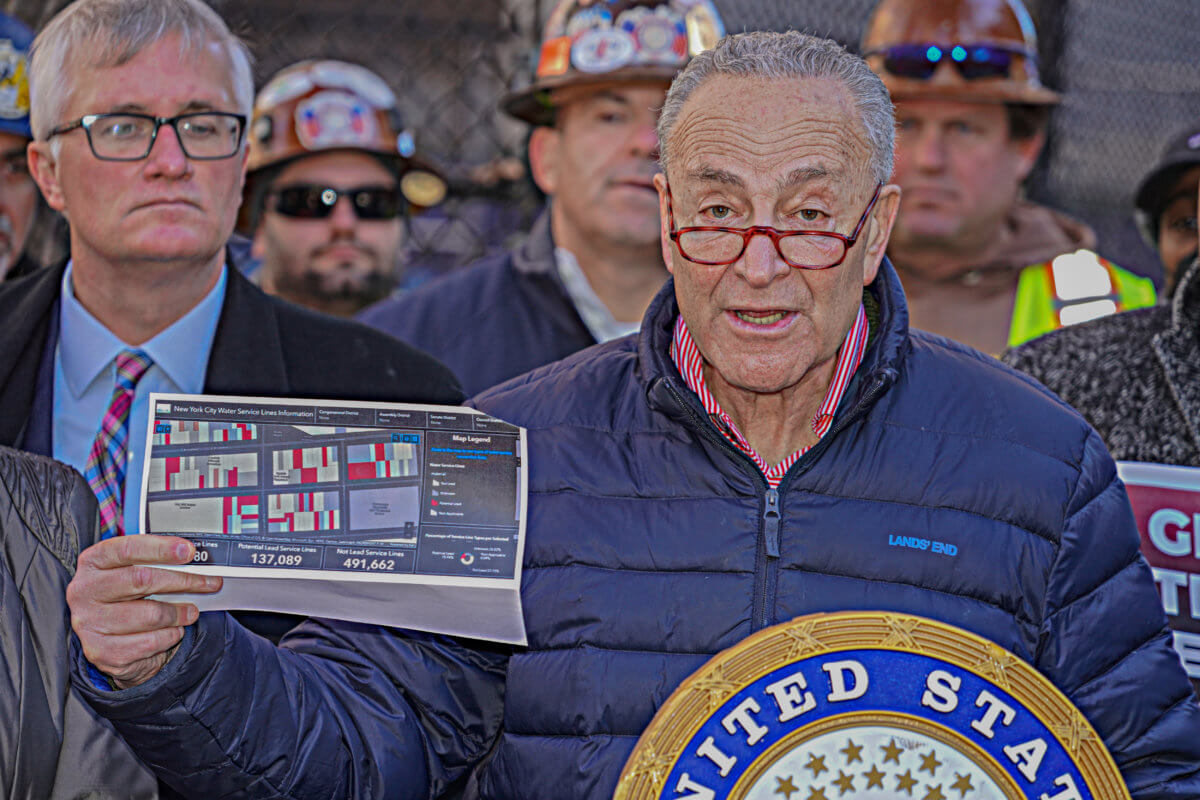
Brandishing pipes and signs reading, “Get the lead out,” Schumer and company called the removal of some 360,000 lead pipes a down payment on justice.
“That’s a lot of potential lead right here in this neighborhood, right where we’re walking, and the pipes may look benign, but they can be poisonous and decades ago, we learned that lead could create huge problems in our kids, but very rarely did people do anything about it. Today we’re here to praise that there is $15 billion in the Bipartisan Infrastructure Bill already signed into law to get the lead out,” Schumer said, adding there is potentially an additional $10 billion within the Build Back Better agenda, and once passed in the Senate would total $25 billion in lead removal funds.
Aside from the health benefits of the removal, Schumer assures that the construction teams and engineers involved will be from union jobs.
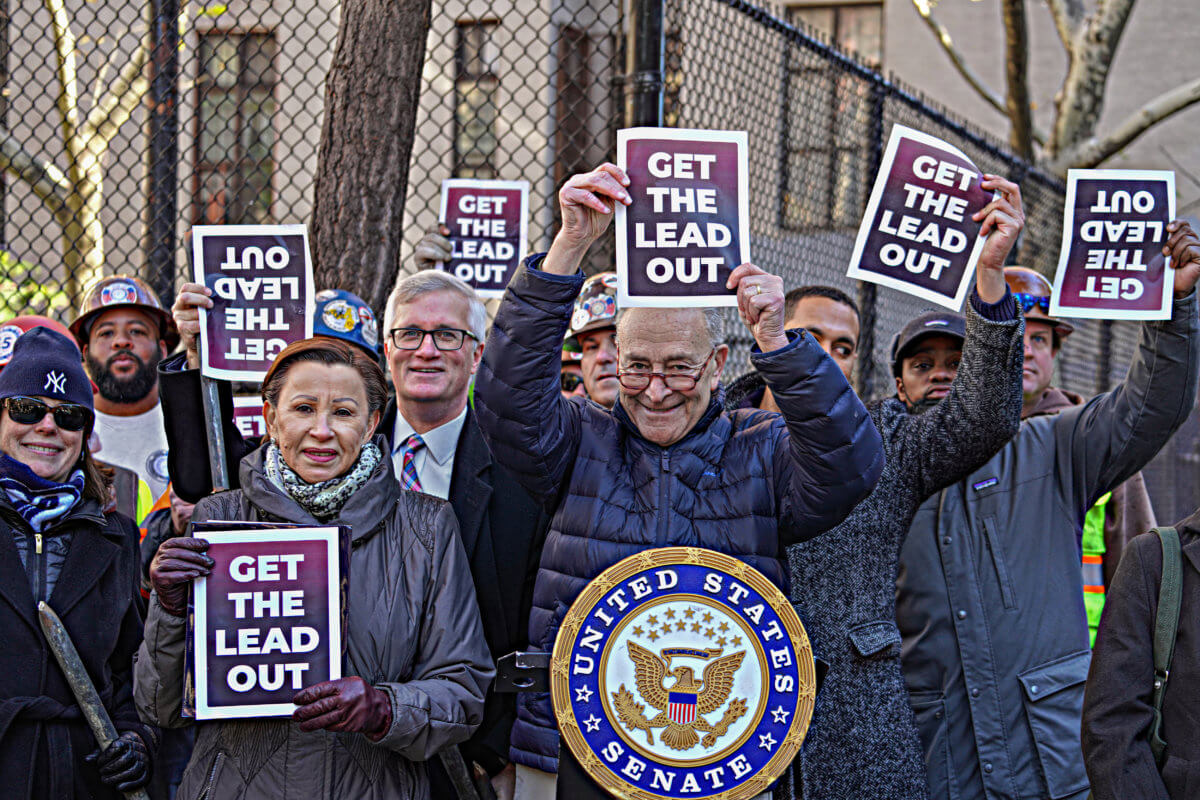
“We all saw what happened in Flint, Michigan. We saw that lead was a ticking time bomb, especially for poor communities, for black communities, for Latino communities, for communities of color. And let me just say lead is more harmful to children because their nervous systems and their whole systems are developing and lead gets in there early and it hurts them severely,” Schumer said.
As a man of color, incoming Councilmember Marte thanked Schumer for tackling this issue but also spoke on the disproportionate number of Black and Brown families who are most affected by lead. Proclaiming that he will no longer have to worry for his loved ones, Marte likewise thanked environmental advocates for fighting for change.
“They know the work they do takes decades to achieve long nights, long weekends, because they know it’s hard to fight against special interests,” Marte said, adding, “I grew up in this neighborhood. I drank out of lead pipes. Whether it was our home, whether it was at school, whether it was getting a glass of water at church. I am a victim of environmental racism. And I’m so glad we’re finally doing something about it.”
